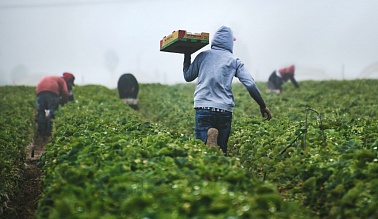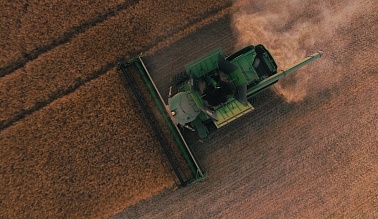Carbon farming
02.02.2022 | agriculture
Half of the world's land is used for growing food. But any active use of a particular resource leads to its depletion and degradation. Active farming and agriculture are no exception. The use of soil resources leads to a build-up of carbon in the soil, which subsequently causes the greenhouse effect. But today's generation of farmers has a solution that can recycle greenhouse gases - carbon farming. Carbon farming is a relatively new set of agricultural practices for neutralising carbon in the soil. From applying carbon-rich fertilisers, to reducing or not tilling the soil, to planting cover crops, to changes in the entire farming system, such as enriched crop rotations or agroforestry.
For more than two decades, Colorado State University (CSU) has been studying the effects of soil carbon on ecology and working to develop agroecosystems. In the late 1960s and early 70s, CSU even invented the discipline of "ecosystem modelling".
The use of computational and mathematical tools makes it possible to predict the amount of carbon in the soil. Keith Paustian, University Distinguished Professor in the Department of Soil and Crop Science, helped develop biogeochemical models that simulate nitrogen and carbon fluxes through agricultural soils and provide guidance for regenerative farming practices.
In 2019, he and his colleagues founded Soil Metrics. The company has quickly become an industry leader in integrated soil carbon and greenhouse gas assessment technology for agriculture. Soil Metrics' mission is to use natural resources to promote sustainable agriculture and combat hunger around the world.
"Our most promising pathway to widespread adoption of carbon agriculture and other sustainability practices is through collaboration and collective action by all stakeholders - scientists, farmers, agricultural associations, government agencies, industry stakeholders and consumers," says Paustian. "These values have been translated into the work of both Soil Metrics and Indigo, and we will continue to develop scalable, affordable and science-based solutions that advance a climate-smart vision of how we feed and fuel the world."
The start of something big
According to Paustian, Soil Metrics was born out of a demand for research and technology that CSU was already developing, only on a larger scale.
"We have developed probably the most robust and advanced software platform for integrating everything from weather and management practices to land use history and soil types."
In part, this began with the university's collaboration with the US Department of Agriculture to create the CarbOn management assessment tool (or COMET). The online tool provides farmers with a reliable method for real-time soil assessment. in soil carbon sequestration, fuel use and fertilizer use as a result of changes in land-use practices.
But, according to Paustian, the demand for this modelling went beyond individual farms. Corporations have also been interested in a commercial version of CSU technology, such as the Daily Century (or DayCent) model, which models the movement of carbon and nitrogen through farming systems and is used in the EPA's National Greenhouse Gas Inventory.
Stakeholders include current customer Post Holdings, a consumer products company. The company has brought Airly® Oat Clouds™ to market thanks to its innovative Soil Metrics accelerator. These climate-friendly snack crackers help eliminate greenhouse gases with every box sold, by using oats grown on carbon farms and offsetting emissions from manufacturing processes.
"Soil Metrics provides the data and analysis tools that allow Airly to show consumers that we can reduce greenhouse gas emissions through our food choices," says Airly Foods co-founder and president Mark Izzo. "We are delighted that Indigo and Soil Metrics have partnered to extend agricultural modelling as a climate solution."
Next phase
In the near future, CSU will continue to expand its modelling research to address a wider range of sustainability challenges, including maximising the role of farmland as a carbon sink and reducing nitrous oxide and methane emissions from agriculture.
"If we can take the idea of regenerative agricultural conservation practices and make them the rule rather than the exception in agricultural systems around the world, we will all be better off."



